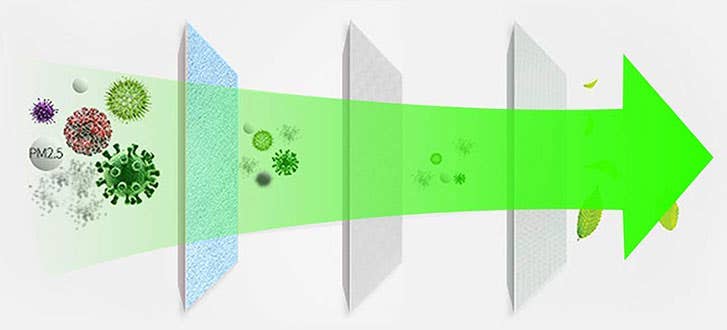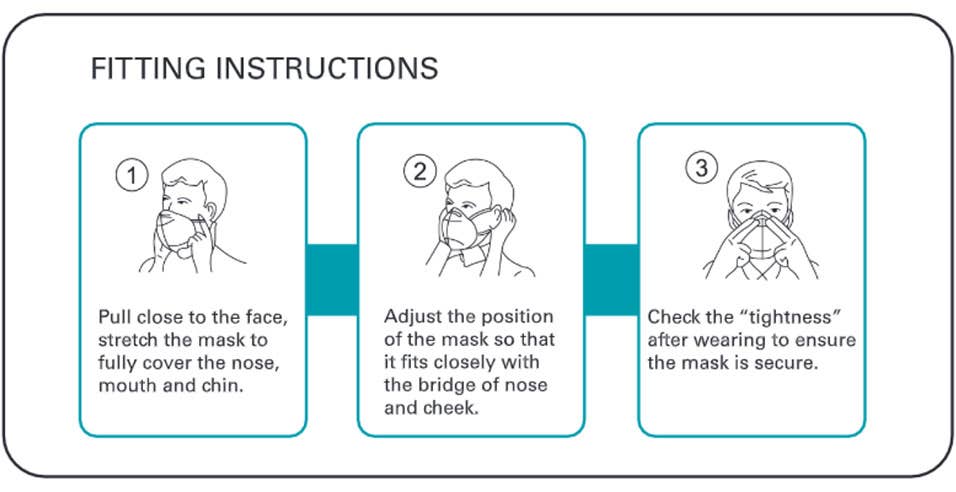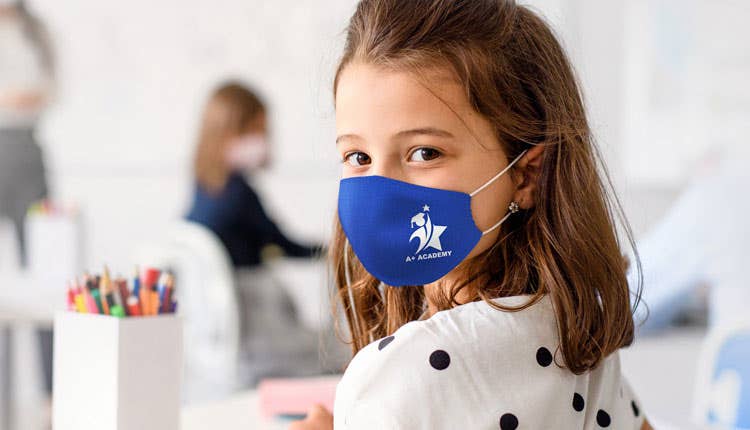The pace of change over the last few months has been bewildering for all of us. For children still struggling to understand where the virus came from, explaining all of the other changes to our social behavior can be a huge challenge for parents.
One of the biggest changes for children to adapt to is getting used to wearing a mask inside. With school back in session, children will be required to wear masks in many classrooms if they opt for in-class learning.
When getting children to cooperate with the morning routine can already be challenging, parents need to be equipped with concrete strategies to simply and convincingly explain why wearing a mask indoors or in crowds is one of the most important steps everyday people, including kids, can take to slow the spread of COVID-19.
Understand Their Fears
Understanding the reasons why children might be afraid of or uneasy about masks makes it a lot easier for parents to troubleshoot when there is resistance to wearing a mask.
A masked face is unsettling to young children because they rely on visual cues from adult facial expressions to feel safe and secure. Toddlers and preschoolers may react with visible discomfort when they see a person wearing a mask. Parents and caregivers can help to allay their fears by using a soothing tone to state reassuring phrases like “It’s okay” and “that’s normal right now.”
Older children with a better understanding of the situation may not have as much fear about wearing a mask or seeing people in masks, but they may have deeper anxiety. Given the uncertainty of the situation, older children may be worried about how long masks will be needed or whether they are using the mask properly. Calmly explain that we cannot be certain how long the pandemic will last, but that we can be certain it will not last forever.
Some children have less anxiety when they have more information. There are many great animated videos on YouTube that explain the science behind the pandemic and the importance of wearing masks in a way that children can understand.
Germ Theory for Kids
Like all human beings, children need a rational explanation as to why something is needed in order to be willing to make behavioral changes. There are easy ways to explain the rationale for masks that are engaging and accessible for kids.
One place to start is with a basic explanation of germ theory. A good, kid-friendly script to explain the basic theory of how viruses are spread could go something like this: “COVID-19 is caused by a virus. I virus is a living thing that is smaller than our eyes can see. When a virus gets into our bodies it can cause a bad reaction. This bad reaction is called a disease. Diseases can make our bodies feel bad in many ways, like coughs and fevers. Viruses can get into our bodies in different ways, but this virus gets in through our mouths and noses.”
Invisible threats are difficult for children to comprehend so this simple can help to demystify the concern about a danger that cannot be seen.
How Masks Work
This basic explanation of germ theory paves the way to explain the science behind masks. Children who have received the explanation above are now ready to learn how masks can reduce the spread of the virus.
The objective of the non-medical cloth masks that people are wearing indoors is to protect the public from the mask wearer. The idea is that people who are asymptomatic or pre-symptomatic may go out in public and unwittingly infect people. In this circumstance, wearing a mask that covers the mouth and nose can prevent the spread of the coronavirus. Larger droplets that are expelled from a person’s mouth when they speak, exhale, or cough are caught by the mask, thereby reducing the risk of transmitting the virus to someone else.
For children, the explanation can be as simple as “When we have a mask on that covers our face and nose, it can stop the virus from traveling from our body to someone else’s body. This is helpful if we have the virus in our body and don’t know it. When everybody wears a mask it keeps people safe by making it harder for the virus to travel from body to body.”

The focus of the conversation can then shift to how to wear the mask. Simple language could be “The virus can come out of people’s noses and mouths, so masks only work when they completely cover those parts of our bodies.”
Another helpful strategy can be to give children a tour of the mask they will be wearing and explain what all the parts are for. For example “These elastics go around our ears. They help to keep the mask on tight so it covers our mouth and nose. This metal wire goes over our nose. It keeps the mask close to our face and keeps it from slipping down.”
The World Health Organization’s (WHO) most recent recommendation is that fabric masks have three layers. The layer that touches the face should be “hydrophilic”, meaning it has high absorbency. Cotton is one example of such material. WHO recommends that this inner layer be white so it is easy to see when the mask becomes dirty.
The middle layer is a thin insert that acts as a filter. The ideal material is a polypropylene fabric, which is a spun-bound, non-woven material.
The outer layer of the mask should be “hydrophobic”, or water-repelling. Fabrics that meet these criteria include polyester and polyester-cotton blends.
 All of these concepts can be explained to children with simple language like in the examples used above. There is also a video on WHO’s website that explains the layers of a cloth mask using language that children can understand with some support from an adult.
All of these concepts can be explained to children with simple language like in the examples used above. There is also a video on WHO’s website that explains the layers of a cloth mask using language that children can understand with some support from an adult.
Children are more receptive to change when they feel they have some level of control over what is happening. A great way to support children to feel like they have control over wearing a mask is by letting them choose the fabric for their mask.
For example, iPromo offers plenty of kid-friendly mask options that can be customized to the design of the buyer’s choice. There are four reusable, machine washable styles available. These can be customized with logos or store branding, including:
- Custom Reusable 2 Ply Child Face Mask With Pocket For Filter, Full Graphic Dye-Sub Print ( For Kids Ages 5-8 )
- Sentinel Polyester Face Mask for Children in White
- USA Made Full Color Adjustable Face Mask – White
- District ® Youth V.I.T. ™ Shaped Face Mask 5 pack (100 packs = 1 Case)
Masks are a great promotional item for children’s clothing retailers. They can be customized with store logos or branding. Children can be encouraged to pick out a mask that matches their outfit so that it feels more like an accessory than something alien.
When Masks Should be Worn
Helping children to understand current recommendations regarding when masks should be worn can help to reduce their confusion regarding why they must wear masks at some times and not others.
Every jurisdiction has different rules, but the general guidance is that a non-medical mask should be worn at all times when a physical distance of 1 – 2 meters cannot be maintained. This includes most indoor environments, as well as crowded outdoor environments.
An explanation of how to tell when it is time to put on a mask can sound something like this: “We do not need to wear our masks at home when we are with our family, the people we don’t need to physically distance from. Anytime we are with people who do not live at our house, we need to wear a mask if we cannot stay far away from them. This means we always need to wear a mask when we are inside with other people. We may also need to wear our masks outside if it is crowded.”

Answer Questions
Once all of this has been explained, it is important to encourage children to ask questions and let them know they can come back with follow-up questions at any time.
Right now, many of the children’s questions will revolve around expectations regarding mask-wearing at school and this may be a significant source of anxiety. Parents can check their school district’s website for up-to-date information on mask protocols in September. Children should be provided with this information as soon as it is known to parents. If a child is old enough to read, the guardian and child and read the material together and the adult can answer any questions while they review it.
Parents can prepare ahead for likely questions like:
- Will I need to wear a mask outside?
- Will I get sick if my mask falls off?
- How many masks do I need to take to school each day?
- How long will we have to wear a mask?
- Is this really making a difference?
Keeping it Simple
Depending on the age of the child, a conversation that explains all of the reasons why face masks are important will likely need to happen in installments. Take the science step-by-step and use visual aids like the mask itself or online videos to assist.
Empowering children to make their own mask selections can help to reduce their concerns and make wearing a mask fun. Take a look at the many fund options available at iPromo today!


